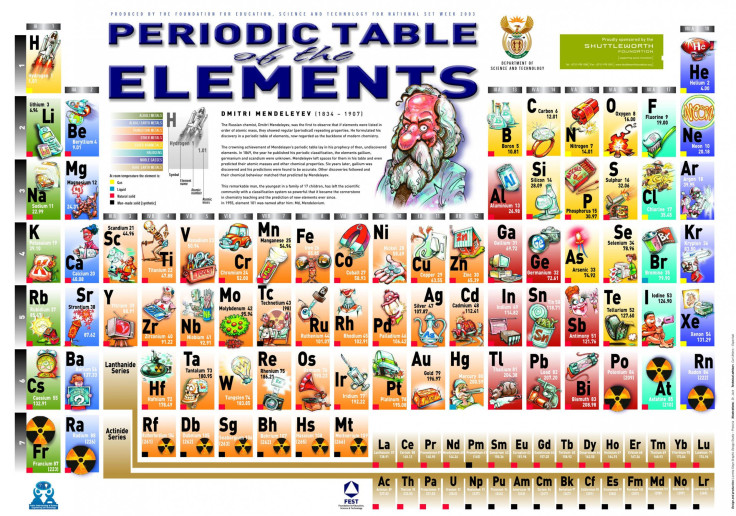Scientists Discover New Element 115; Super-Heavy 'Ununpentium' Confirmed By Researchers

Chemistry teachers be prepared. Some new changes may soon be coming to the periodic table.
According to researchers from Lund University in Sweden, new evidence has been found to confirm the existence of a super-heavy element with the atomic number 115. The atomic number is the number of protons contained in the nucleus of an atom of the element.
The highly radioactive element hasn't been officially named, but for the time is being called ununpentium (for one-one-five). It's so unstable that it exists for less than one second before it decays into lighter atoms, reports the BBC.
The element was first discovered in 2004, but the research team's experiments confirms the existence of the element.
To create ununpentium for the study, the researchers shot a extremely quick beam of calcium -- which has 20 protons -- at a film of americium, an element with 95 protons, reports NBC. When the atomic nuclei of the elements collided, a few of them fused together, fabricating short-lived atoms of 115 protons.
"We observed 30 in our three-week-long experiment," study researcher Dirk Rudolph, a professor of atomic physics at Lund University, said in an email to NBC.
In order to view the super-heavy atoms, scientists had to use special detectors able to look for the specific form of X-ray radiation expected to be given off by element 115 as it decays.
It is now up to a committee from the International Union of Pure and Applied Chemistry to analyze the study and decide if element 115 will be given an official name. More experiments may be required before the element is officially confirmed by the committee.
© Copyright IBTimes 2025. All rights reserved.






















